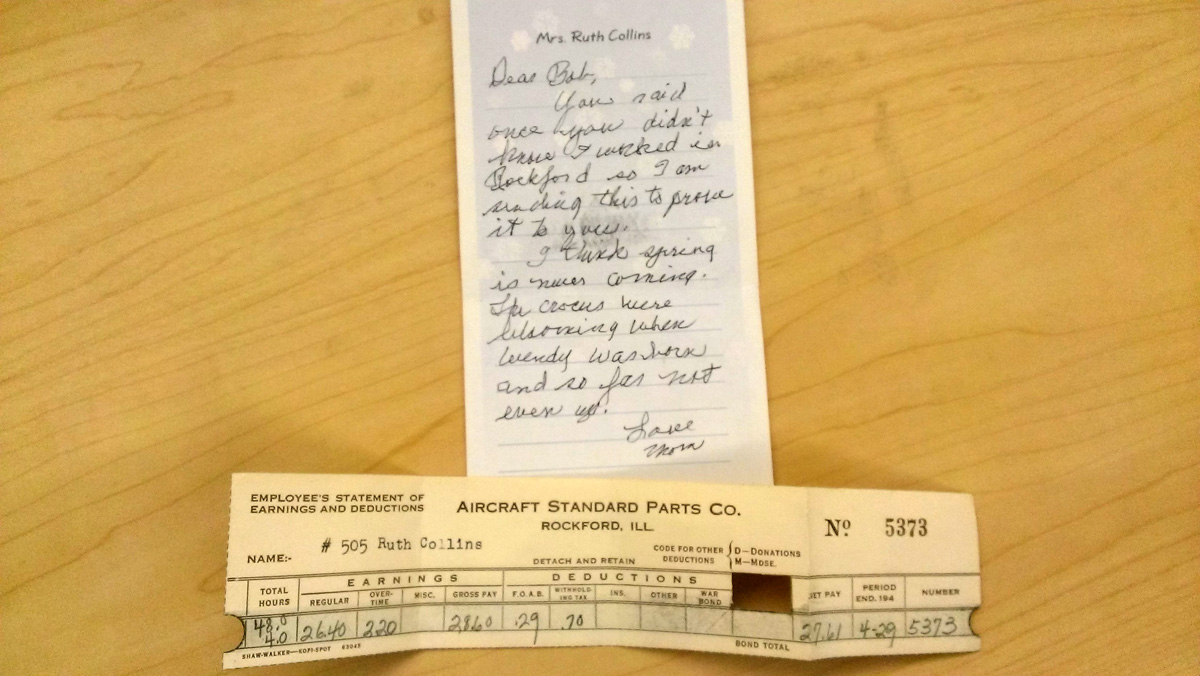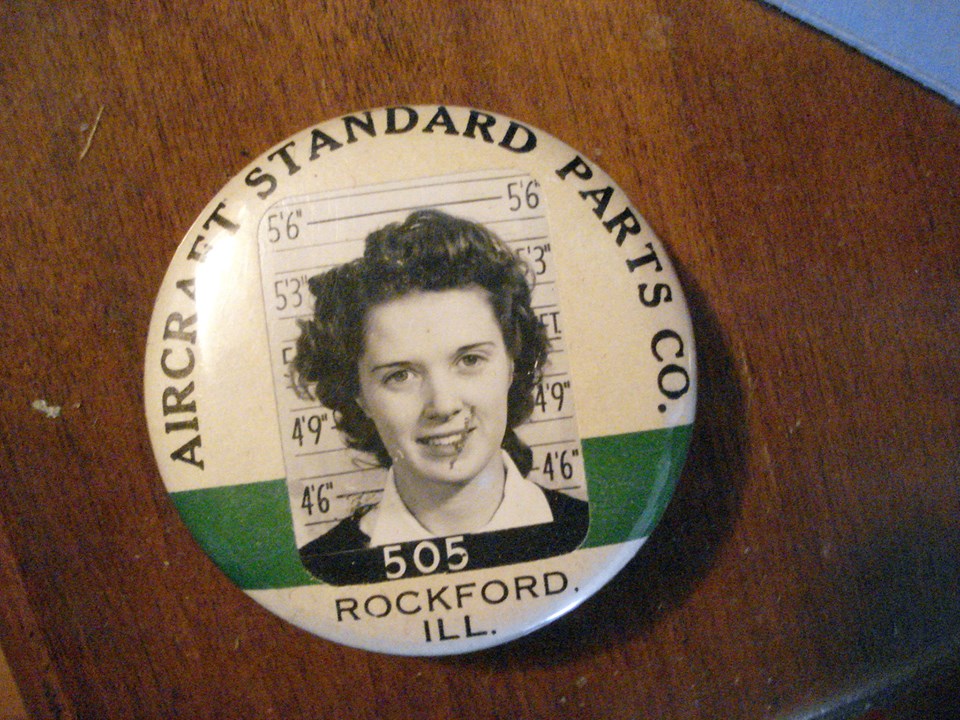Mother NewsCut, now 92, sent me a letter in the mail the other day, which was a stunning enough experience these days, but it’s what was inside that riveted my attention. It was a piece of her life.
It’s a pay stub from a factory in Rockford, Ill., where she worked when World War II broke out. For a short time, my father was stationed in Rockford before going overseas.
She said she sent it to me because when she posted her old ID badge on Facebook a few months ago, I mentioned I had no idea she worked in an aircraft parts plant. She said she felt she had to prove that she, indeed, had. My clan takes nobody’s word for anything.
So now I have another piece of her life in a scrapbook I keep of the things she sends from time to time to pass along fragments of her life’s story.
As I near retirement, I’ve been thinking about this more. When I go, NewsCut goes too and any evidence of what I spent the last years of my working life doing dies with it.
It’s not a big deal in the big scheme of things. I’ve still got a lot of pictures on the computer and I’ve been organizing them over the last few years in the unlikely chance that some future heir will care. They’re on the old Windows XP machine at the moment, the one that experts say I shouldn’t use anymore because Microsoft today orphans the program.
In the digital age, organizing our lives takes a lot of work. It has to be updated and tended and, more important, placed in context. Maybe we’ll get around to doing that, maybe we won’t.
That’s why just shoving something in a box and throwing it in a closet to be discovered by the future might be the more efficient method of leaving history.
What will the digital generation leave behind to prove it was here?
That question surfaces today in a blog post by NPR’s All Tech Considered about the challenges historians are facing.
The story about archivists at a university is, ostensibly, about handling the big collections that famous people leave, but it could just as easily be the stories of every family in coming years.
The hard drive full of photographs may serve as the digital pile of old pictures, it says. But who’s to say that 60 years from now, the hard drive will work? Or even exist? If they don’t, now what part of you is still around?
It’s not only a question of keeping old technology living in order to access what the departed left behind in the format they left it in. It’s also a question of leaving too much digital stuff, making it far too easy to get the wrong impression.
That’s what Benjamin Moser is going through right now. He’s the authorized biographer for the late writer Susan Sontag. After she died in 2004, her estate sold her letters, computers and other materials to UCLA for a special collection.
“She had about 15 years of her life happening on the computer. So her stuff that she had — which were notes and manuscripts and letters and invitations and photographs — all start to migrate onto digital,” Moser says.
Moser says UCLA is in the process of preserving the computers and making them accessible to researchers in a read-only format. The wealth of information can be daunting — and a bit eerie.
“Going through these things requires even more tact. There is a real temptation to go in there and say, ‘Gosh, this was a really angry woman.’ It makes it very easy to reduce people,” Moser says.
Whether you think Sontag was a snob or the greatest writer ever, Moser says you can put your prejudices into the system and see them reflected instantly due to the sheer amount of things people say digitally.
That puts the average person in the same position as the famous people who give their letters and personal papers to institutions.
You might be able to curate your life’s little pay stubs digitally, but there’s no guarantee your heirs will keep it updated in a format that survives.


